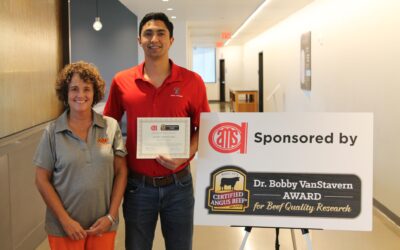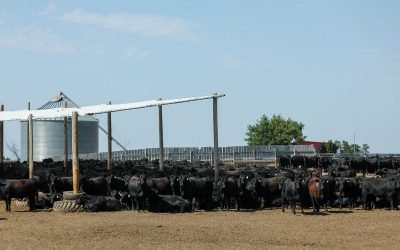
In disguise
In good or bad, there’s often a dramatic story to tell.
What’s hard to write about? So-so news that’s neither good nor bad. It just is.
It’s been a month since the Feeding Quality Forum meetings we co-sponsor and maybe that’s part of the reason that I’m just now blogging about it.
Some years, like 2008 and 2009, I’ve left the meetings warning cattle people things were going to get tough(er). Corn was getting expensive (compared to historical trends) and would stay that way, but cattle prices were not. Then we had some optimism in 2012 and 2013 where Dan Basse, president of AgResource said, “The story of being a livestock producer is still relatively bullish longer term.”

This year? I heard a lot of comments like, “The markets are an ocean freighter, slow to move. We’re starting to steer them in the right direction,” and, “There are cattle you want to own, and probably some you want to buy at a discount.”
Basically, opportunity is there, but you may have to look a little harder for it.
“I think the worst is over,” Basse said of the overall ag economy, but the analyst talked of tight capital and input prices that haven’t decreased at the same rate as profit. He predicted a low of $100 to $104/cwt. in the cattle market, but suggested improvement in 2018.
U.S. beef making its way into China got a nod from nearly every speaker.
Again, with the opportunity you have to look for: “If you want to get involved in China, you better be talking with the packer you’ll be marketing to and see what their requirements will be,” said Doug Stanton, of IMI Global, a subsidiary of Where Food Comes From.
Market access isn’t guaranteed unless you know those cattle will meet import restrictions.

Today 70% to 80% of fed cattle are sold on grids and special agreements, said Iowa cattleman Ed Greiman. That causes challenges in setting base price, but also allows high-quality cattle to bring what they’re worth.
“CAB (the Certified Angus Beef ® brand) has done all this work to make sure the consumer wants the product, so we’ve got to produce more of them,” he said. (Opportunity!)
Both our own Justin Sexten, and University of California-Davis animal scientist Richard Zinn, noted the value of knowing more about the cattle you feed. That can help you manage better and price them accordingly.

There are opportunities, you just have to look. Maybe that’s not “so-so” news, but rather good news disguised as hard work.
May your bottom line be filled with black ink,
Miranda
P.S.Watch our newsroom for more articles and videos recapping the content from this year’s forum.
You may also like
Certified Angus Beef Recognizes Beef Quality Research
First-place honors go to Andres Mendizabal, an international student pursuing a Ph.D. in animal science at Texas Tech University. His research is titled, “The Accuracy of USDA Yield Grade and Beef Carcass Components as Predictors of Red Meat Yield.”
Not all good days are sunny and warm
Stress of any kind affects performance and health, but also well-being and behavior, a special focus for CSU animal scientist Lily Edwards-Callaway. Her team’s literature review found shade benefits vary by location, structure type and the weather.
Progress from small steps
Every day is a chance to learn and get better. Thousands of others like my new friends in Alabama are taking steps to meet the shifts in consumer demand, and to know more. Small steps in the right direction can start now. Even if it’s just recording a snapshot of where you are today, a benchmark for tomorrow.



